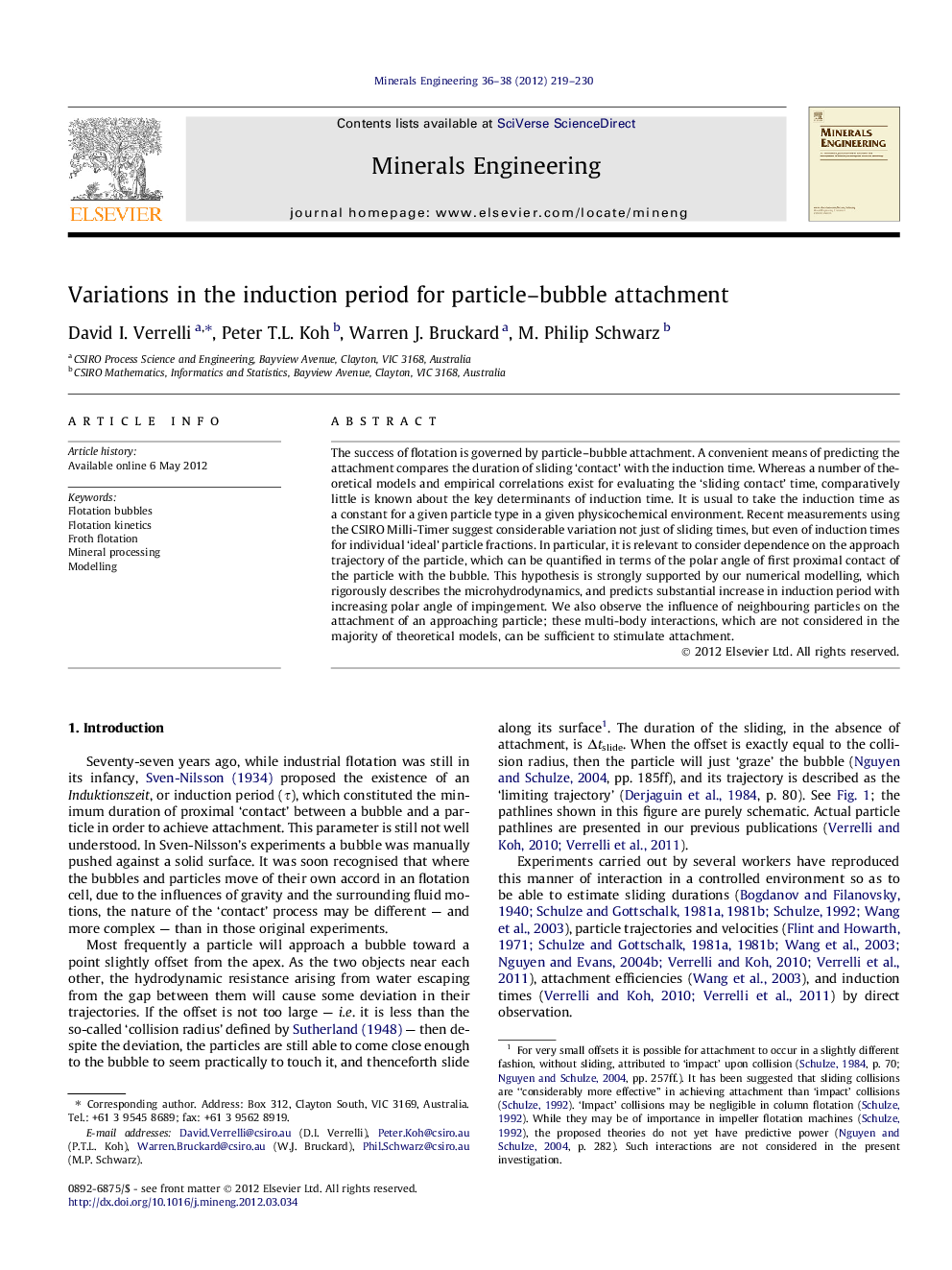| Article ID | Journal | Published Year | Pages | File Type |
|---|---|---|---|---|
| 233541 | Minerals Engineering | 2012 | 12 Pages |
The success of flotation is governed by particle–bubble attachment. A convenient means of predicting the attachment compares the duration of sliding ‘contact’ with the induction time. Whereas a number of theoretical models and empirical correlations exist for evaluating the ‘sliding contact’ time, comparatively little is known about the key determinants of induction time. It is usual to take the induction time as a constant for a given particle type in a given physicochemical environment. Recent measurements using the CSIRO Milli-Timer suggest considerable variation not just of sliding times, but even of induction times for individual ‘ideal’ particle fractions. In particular, it is relevant to consider dependence on the approach trajectory of the particle, which can be quantified in terms of the polar angle of first proximal contact of the particle with the bubble. This hypothesis is strongly supported by our numerical modelling, which rigorously describes the microhydrodynamics, and predicts substantial increase in induction period with increasing polar angle of impingement. We also observe the influence of neighbouring particles on the attachment of an approaching particle; these multi-body interactions, which are not considered in the majority of theoretical models, can be sufficient to stimulate attachment.
Graphical abstractFigure optionsDownload full-size imageDownload as PowerPoint slideHighlights► Direct observation of jump-in event, to quantify sliding duration before attachment. ► Experimental support for dependence of induction time on particle trajectory. ► Modelling of particle trajectories for independent prediction of induction period. ► Modelling results indicate induction period depends on particle’s line of approach. ► Experimental observation of multi-particle effect on attachment to bubble.
